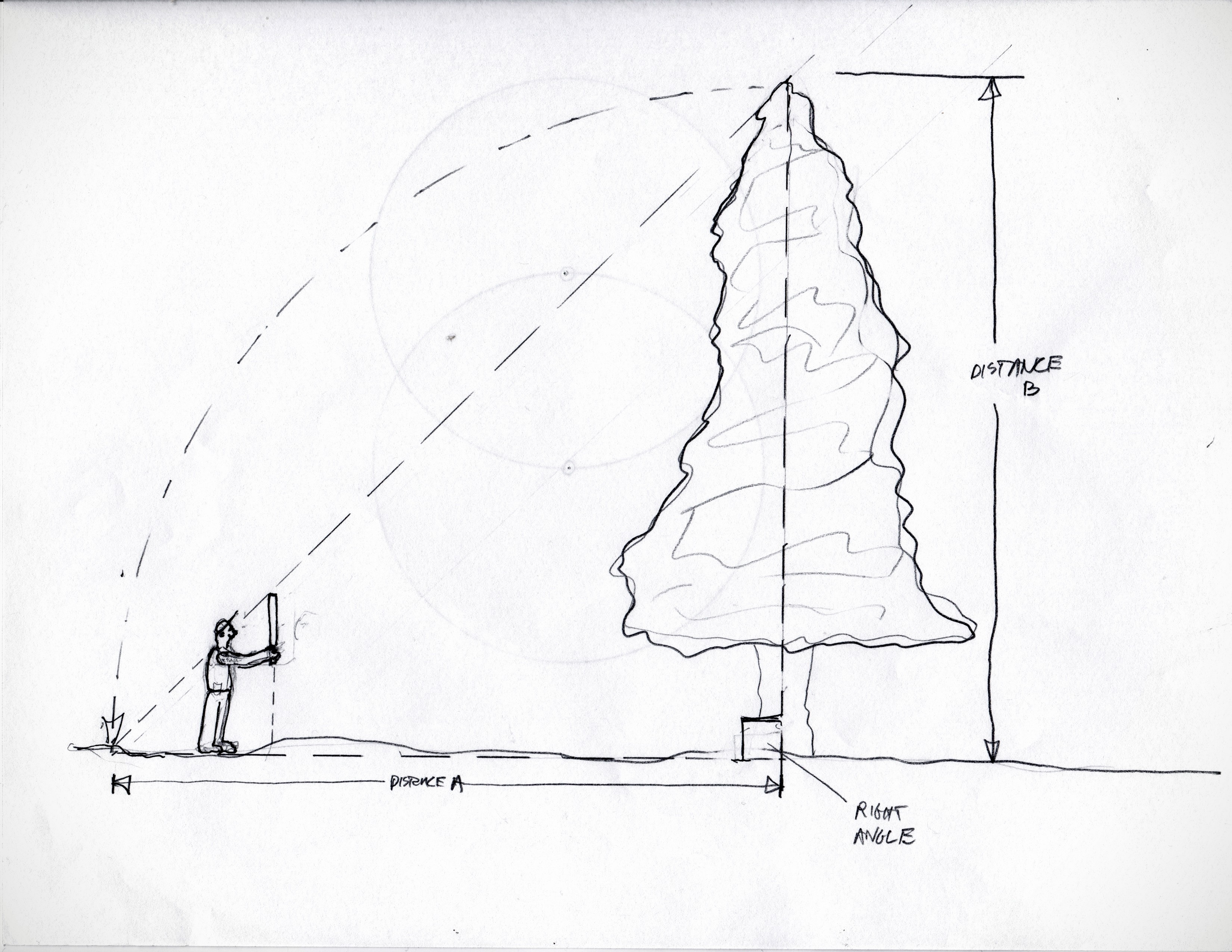An astute follower on Instagram mentioned that an old-school forester could easily get the height of a tree using only a stick the length of his arm. And he’s right. The libella method might give you a bit more accurate result, but this would be a very quick way of seeing how far away you need to stand to not get hit when it falls! See if you can figure out how this would work by studying the above illustration. To avoid being hit by the falling tree, the lumberjack would need to step back a distance equal to his height. If he wanted to know how high the tree is, he could simply count the paces from where he stands to the base of the tree. He would multiply the length of his stride (which he would know from testing) by the number needed to cross the distance.




7 thoughts on “Height by Hand and Eye”
dan
I know! Hold everything perpendicular (arm to body, stick to arm), look up until the end of the stick aligns with the top of the tree. Then, run!
amvolk
I believe that the stick has to be the same length as his arm so that the arm and stick are equilateral and the sight line is at 45 degrees. Then the insect to the ground of the tree top is the height of the man.
The Boy Scouts had a different method for measuring the height of the tree (or whatever). From a distance, hold a longish stick out at arm’s length with the top of the tree at the tip and your hand is aligned with the base. Now rotate the stick 90 degrees (either direction) keeping the top of your hand at the base of the tree. Note where the tip of the stick falls on the ground (or have a helper mark the spot). That is the height of the tree, or where the tree will fall in that direction.
Justin
And perhaps, more frequently, the principles of similar triangles were used in the inventory of merchantable volume (e.g., total board feet) of the trees in the forest. Height, as well as diameter, is a required variable to estimate the volume of wood in a standing tree. The traditional forester’s tool, the Biltmore stick, had markings on each side – one for diameter and one for height. Both sides relied on the geometry of similar triangles to work. The Biltmore stick has been abandoned in this day of laser range-finders and electronic tilt sensors, but its principles will always remain sound.
Brian Ashton
In Canadian Boy Scouts we used to carry a 6 foot staff. One of it’s usaes was to estimate the height os trees etc.
bobeaston
Students in a high school geometry class were taught (and had to prove) many theorems. Their final exam consisted of a “field trip” in which they were each provided a transit instrument (essentially a modern day libella) and asked to go downtown and use that instrument to determine the height of the “Acme” building.
One student climbed to the top of the building, tied the instrument to a rope, dropped it over the side and measured the length of rope needed to lower the instrument to the ground.
A second student paced off some number of steps from the building, used that paced off distance as one known factor, used the instrument to get an angular reading upon the top of the building and then did a Pythagorean theorem calculation to determine the height of the building.
A third student climbed the stairs inside the building, marking the wall with the instrument’s case, counting up the number of case lengths found along the stairwell. Then, a simple multiplication of that number by the length of the case provided a height.
The last student in our story found the building’s superintendent and said, “I’ll give you this thing if you’ll tell me how tall this building is.”
We don’t know how the teacher graded the exam.
Jim Tolpin
Hah! These days a high school student would probably just google it! “Checking the main frame” as they say.
Bydie
When I was a seasonal surveyor with the Forest Service in Montana my crew was sent to block unauthorized jeep trails by felling trees across the tracks. At one spot there was a likely tree but it wasn’t obvious if it was tall enough to reach, and cross, the trail. While three of us were working out the tree height from several of the methods mentioned above, we heard a chain saw fire up and turned to see our least academic crew member drop the tree in question. He shut the saw down and yelled over, “Its not long enough.” The empirical method.